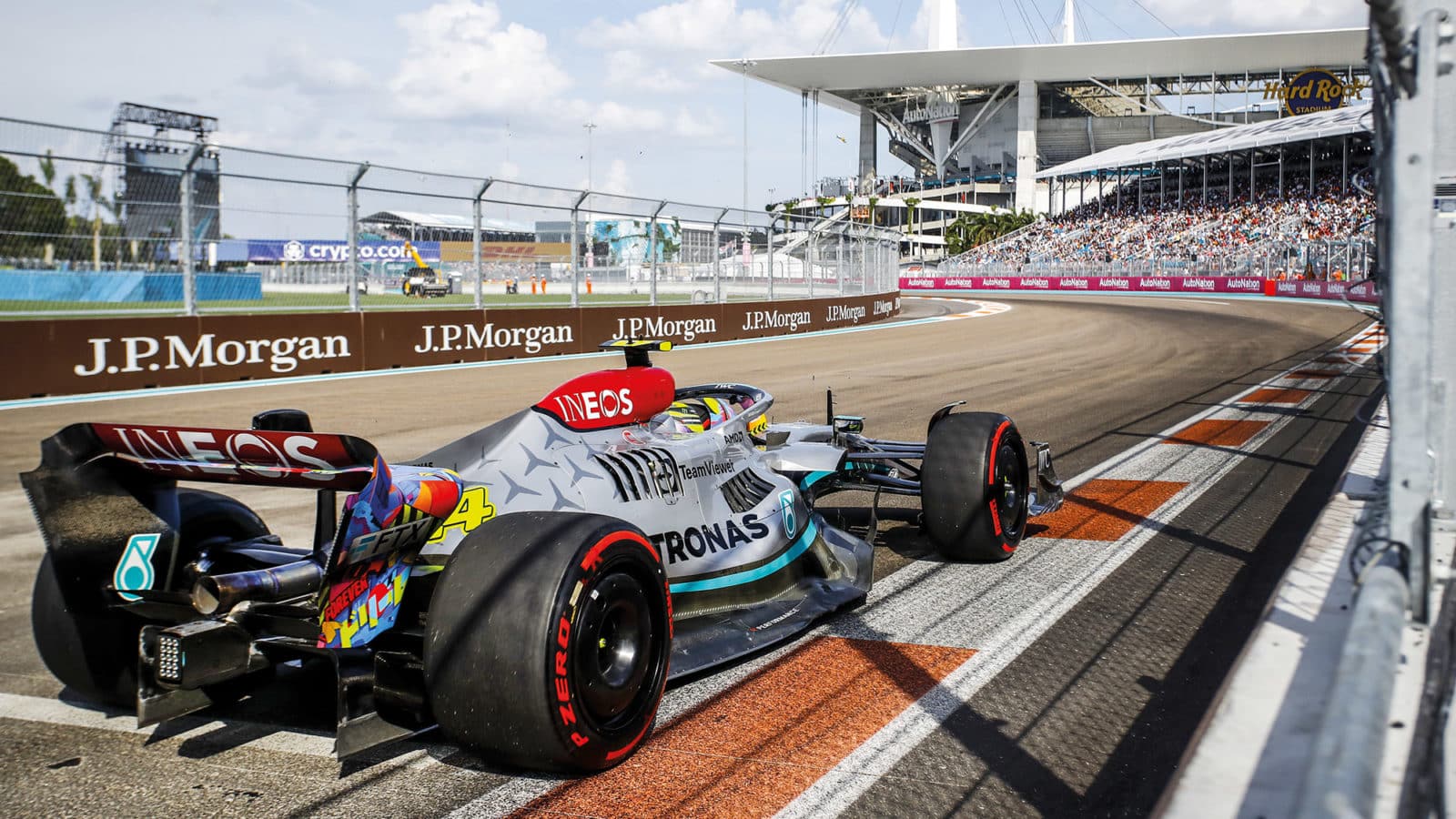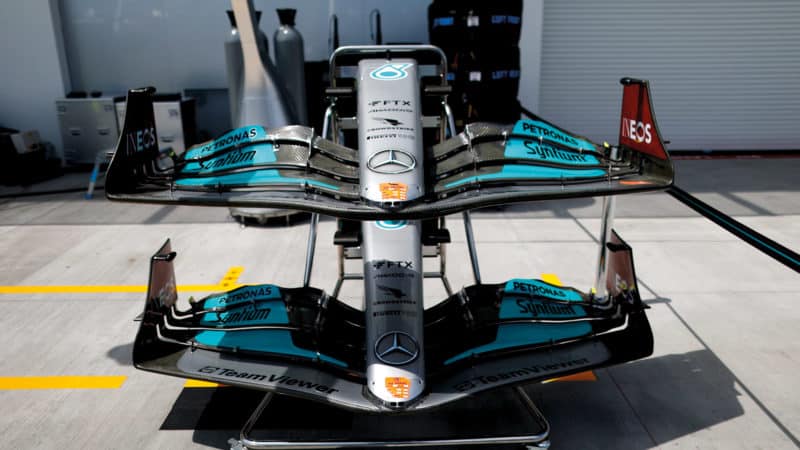Set-up struggles make this year's Mercedes F1 car a mystery machine
A new lower-downforce set up but the bouncing issues continue. Mark Hughes explains Mercedes’ latest amendments to the W13

Mercedes brought a range of upgrades to Miami including a new rear wing and beam wing
Mercedes introduced the first significant upgrades to its troublesome W13 at Miami. Although the team feels that it needs a fuller understanding of the root cause of the car’s inconsistencies before it can know whether to proceed with its ‘zero sidepod’ concept, it is hoped these initial developments may change the car’s behaviour in a way which might shed more light on the problem.
The changes seen at Miami comprised a new lower-downforce rear wing and an associated smaller beam wing below – and a new, quite radical, front wing endplate, inset right. The rear wing is of a completely new family, with a straight-edged mainplane of smaller area than what has been used to date and a new tailor-made shallower upper flap. Up until now the rear wing level was simply varied by trimming the depth of the existing upper flap.
“This one is more efficient than the one we’ve been running,” explained Andrew Shovlin, the chief of trackside engineering. “You’ve seen at previous low-drag tracks we’ve trimmed our wing away whereas this one is actually designed for this low level of downforce.” It should give us greater downforce for an equivalent drag or lower drag for an equivalent downforce.
Concurrent with the wing was a revised lower beam wing. The beam wing sits between the diffuser exits and the rear wing, connecting the airflow between them. It takes the airflow exiting the diffuser and directs it to the underside of the wing, working that wing harder by increasing the difference in pressure between its upper and lower surfaces.
“There is potential in the car but we don’t know how to get it out”
But the beam wing itself induces drag in doing this. The outer ends of the upper beam wing flap on the new version are tapered away – again probably in chase of greater aero efficiency, as they work in conjunction with the shape of the new rear wing.
According to Mercedes’ technical director Mike Elliott this arrangement brought the intended benefits. “They definitely brought us the performance we were expecting and were a step forward,” he said after the weekend.
The new front wing endplate demonstrated a unique take on the new regulations which are quite restrictive in this part of the car, as the rule makers have sought to minimise the effectiveness of the outwash when they outlawed the multiple elements on the endplate in favour of a single plain element. Slots are permitted between the outboard end of the wing elements and the endplate to direct the airflow but there must be no overlapping surfaces – i.e. the wing elements must stop inboard of the endplate.

New front wing endplates feature re-designed slots at the lower edge to direct more air outwards around the front tyres
What Mercedes has done with the new endplate is expose the end of the elements with a cutaway at the bottom of the endplate. The elements still stop shy of the endplate and don’t overlap but the air will be directed by the shapes of those endplates into open space. A small cut-out on the top element would seem to be acting as a vortex generator which will energise the outwash further.
The more effectively the air disturbed by the front wing and wheels can be directed away from the car, the less it will interfere with the flow to the underbody and along the lower flanks of the car. The cleaner and more energised those flows can be kept, the more downforce will be created.
“That is going to affect the flow down the car, and elements like the outwash,” said Shovlin. “Fundamentally, it’s just more downforce for the same drag. Also all these new parts together, when we remade them, we made them lighter, helping us get more weight out the car.”
The net effect of all these changes was a car which, despite its promising practice form on the Friday, qualified 0.829sec off pole, or 0.937% compared to a previous average of 0.931%. Before the late safety car bunched the field up with 17 laps to go, Lewis Hamilton was already almost a minute behind the leader. In other words, the changes made no apparent difference. It’s clear that the dominant mechanism in the car’s lack of competitiveness is the porpoising issue. “They were normal aero development,” said Shovlin of the new parts. “We are working on the issues we’ve got with the bouncing separately.”
More new parts were due in Spain a couple of weeks later, with the time pressure building about whether to abandon or stay with this concept for the following year’s car. “In Barcelona we can compare the car with the way it was during the winter tests,” said Toto Wolff, referencing the car with conventional sidepods which tested there. “After that we have to look in the mirror. At the moment we are still faithful to the current concept. We are not looking at the neighbour whether it is nicer or not.
“It is clear that there is potential in the car, but we just don’t understand how to get that out. It’s a painful process because it takes a long time.”
